Potential Output: Concepts and Measurement - Department of Labour
Potential Output: Concepts and Measurement - Department of Labour
Potential Output: Concepts and Measurement - Department of Labour
You also want an ePaper? Increase the reach of your titles
YUMPU automatically turns print PDFs into web optimized ePapers that Google loves.
Darren Gibbs<br />
73<br />
These measures are also relevant for labour market analysts <strong>and</strong> commentators.<br />
In addition to their use in developing employment <strong>and</strong> wage projections,<br />
which rely on forecasts <strong>of</strong> the overall level <strong>of</strong> activity, they also play a part in<br />
informed decision-making regarding the feasibility <strong>of</strong> various labour market<br />
policy settings. For instance, a knowledge <strong>of</strong> how close to capacity the economy<br />
is can tell us about the extent to which efforts to reduce unemployment, or<br />
trends in employment growth, are likely to result in upward pressure on wages<br />
or prices.<br />
The aim <strong>of</strong> this paper is to present a brief survey <strong>of</strong> the techniques that have<br />
been used overseas to measure potential output, <strong>and</strong> to apply several <strong>of</strong> these<br />
techniques in order to estimate preliminary potential output series for New<br />
Zeal<strong>and</strong>. Section 2 defines what is meant by the term ‘potential output’, <strong>and</strong><br />
outlines more fully why the concept is <strong>of</strong> interest to central banks, governments<br />
<strong>and</strong> private sector businesses. The main techniques used by economists to<br />
empirically measure potential output are then discussed in section 3. Section 4<br />
presents the results obtained when applying a number <strong>of</strong> these techniques to<br />
New Zeal<strong>and</strong> data, <strong>and</strong> section 5 uses econometric techniques in an effort to<br />
select which <strong>of</strong> the estimates is preferable. The paper ends with a brief<br />
conclusion, which summarises the main ideas <strong>and</strong> results <strong>and</strong> suggests possible<br />
directions for future research.<br />
2 Economic growth <strong>and</strong> potential output<br />
Following World War II, a stable economic environment saw st<strong>and</strong>ards <strong>of</strong> living<br />
in most OECD countries grow rapidly. 4<br />
For many years New Zeal<strong>and</strong> also<br />
enjoyed strong economic growth <strong>and</strong> almost everybody who wanted a job was<br />
able to find work. However by the late 1960s economic performance had begun<br />
to deteriorate in most OECD countries, <strong>and</strong> the extent <strong>of</strong> deterioration was<br />
particularly marked in the case <strong>of</strong> New Zeal<strong>and</strong>. Whereas New Zeal<strong>and</strong>’s<br />
st<strong>and</strong>ard <strong>of</strong> living was ranked third in the developed world in 1950 (behind the<br />
United States <strong>and</strong> Canada), by 1975 it had dropped to fifteenth. During the<br />
decade following the first oil shock in 1973, New Zeal<strong>and</strong>’s economic<br />
performance slumped significantly. Growth during 1975 to 1984 averaged little<br />
more than 1.5 percent; <strong>and</strong> our relative st<strong>and</strong>ard <strong>of</strong> living dropped further to<br />
twenty-first place on the OECD ladder.<br />
The deterioration in economic performance prompted a serious rethink <strong>of</strong><br />
economic policy. As a consequence, since the mid 1980s, successive governments<br />
have implemented a comprehensive programme <strong>of</strong> economic <strong>and</strong> financial<br />
reform. These reforms have included: the deregulation <strong>of</strong> the banking industry;<br />
the freeing <strong>of</strong> controls on international capital flows (including the floating <strong>of</strong> the<br />
4<br />
The term ‘st<strong>and</strong>ard <strong>of</strong> living’ as used here refers only to measured pecuniary benefits as<br />
proxied by GDP.



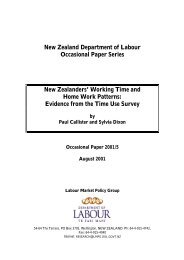

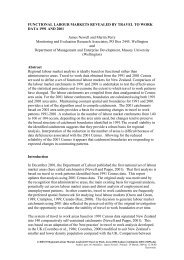

![a note on levels, trends, and some implications [pdf 21 pages, 139KB]](https://img.yumpu.com/27285836/1/184x260/a-note-on-levels-trends-and-some-implications-pdf-21-pages-139kb.jpg?quality=85)


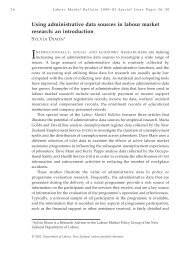
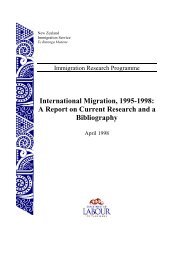
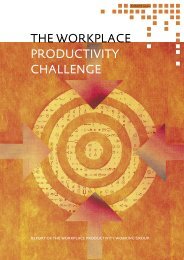
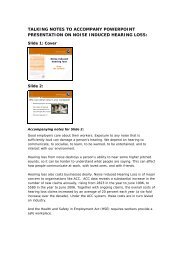
![Labour Market Trends and Outlook - 1996 [pdf 18 pages, 94KB]](https://img.yumpu.com/27285764/1/184x260/labour-market-trends-and-outlook-1996-pdf-18-pages-94kb.jpg?quality=85)

